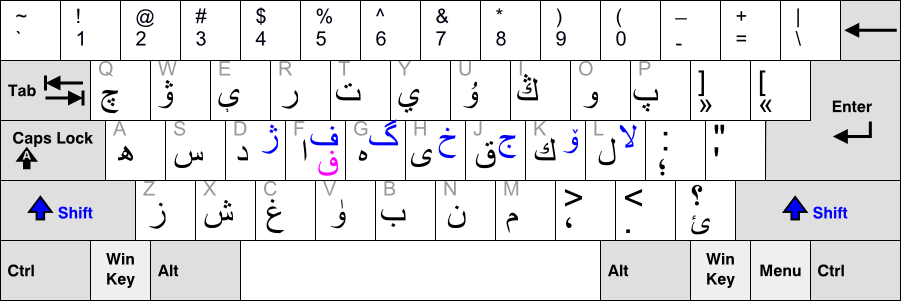Uyghur Ereb Yéziqi on:
[Wikipedia]
[Google]
[Amazon]
The Uyghur Arabic alphabet () is a version of the

Arabic alphabet
The Arabic alphabet, or the Arabic abjad, is the Arabic script as specifically codified for writing the Arabic language. It is a unicase, unicameral script written from right-to-left in a cursive style, and includes 28 letters, of which most ...
used for writing the Uyghur language
Uyghur or Uighur (; , , or , , ), formerly known as Turki or Eastern Turki, is a Turkic languages, Turkic language with 8 to 13 million speakers (), spoken primarily by the Uyghur people in the Xinjiang Uyghur Autonomous Region of Western ...
, primarily by Uyghurs
The Uyghurs,. alternatively spelled Uighurs, Uygurs or Uigurs, are a Turkic peoples, Turkic ethnic group originating from and culturally affiliated with the general region of Central Asia and East Asia. The Uyghurs are recognized as the ti ...
living in Xinjiang Uyghur Autonomous Region
Xinjiang,; , SASM/GNC: previously romanized as Sinkiang, officially the Xinjiang Uygur Autonomous Region (XUAR), is an autonomous region of the People's Republic of China (PRC), located in the northwest of the country at the crossroads ...
. It is one of several Uyghur alphabets
Uyghur is a Turkic language with a long literary tradition spoken in Xinjiang, China by the Uyghurs. Today, the Uyghur Arabic alphabet is the official writing system used for Uyghur in Xinjiang, whereas other alphabets like the Uyghur Cyrilli ...
and has been the official alphabet of the Uyghur language since 1982.
The first Perso-Arabic derived alphabet for Uyghur was developed in the 10th century, when Islam
Islam is an Abrahamic religions, Abrahamic monotheistic religion based on the Quran, and the teachings of Muhammad. Adherents of Islam are called Muslims, who are estimated to number Islam by country, 2 billion worldwide and are the world ...
was introduced there. The alphabet was used for writing the Chagatai language
Chagatai (, ), also known as Turki, Eastern Turkic, or Chagatai Turkic (), is an Extinct language, extinct Turkic languages, Turkic language that was once widely spoken across Central Asia. It remained the shared literary language in the region u ...
, the regional literary language
Literary language is the Register (sociolinguistics), register of a language used when writing in a formal, academic writing, academic, or particularly polite tone; when speaking or writing in such a tone, it can also be known as formal language. ...
, and is now known as the Chagatay alphabet (). It was used nearly exclusively up to the early 1920s. This alphabet did not represent Uyghur vowels and according to Robert Barkley Shaw, spelling was irregular and long vowel letters were frequently written for short vowels since most Turki speakers were unsure of the difference between long and short vowels. The pre-modification alphabet used Arabic diacritics
The Arabic script has numerous diacritics, which include consonant pointing known as (, ), and supplementary diacritics known as (, ). The latter include the vowel marks termed (, ; , ', ).
The Arabic script is a modified abjad, where all ...
(, and ) to mark short vowels. Also, the was used to represent a short by some Turki writers.
Alternative Uyghur scripts then began emerging and collectively largely displaced Chagatai. Between 1937 and 1954, the Perso-Arabic alphabet used to write Uyghur was modified by removing redundant letters and adding markings for vowels. The Uyghur Cyrillic alphabet was introduced around 1937, and the Latin-based Uyghur New Script
The Uyghur New Script () is a Latin alphabet with both Uniform Turkic Alphabet and Pinyin influence, used for writing the Uyghur language between 1965 and 1982, primarily by Uyghurs living in China.
It was devised around 1959 and came to replace ...
in 1958. The modern Uyghur Perso-Arabic alphabet was made official in 1978 and reinstituted by the Chinese government in 1983, with modifications for representing Uyghur vowels.
The reformed modern Uyghur Arabic alphabet eliminated letters whose sounds were found only in Arabic and spelled Arabic and Persian loanwords such as Islamic religious words, as they were pronounced in Uyghur and not as they were originally spelled in Arabic or Persian.
Current Official Alphabet
The table below lists all 32 letters of the current official Uyghur alphabet used inXinjiang
Xinjiang,; , SASM/GNC romanization, SASM/GNC: Chinese postal romanization, previously romanized as Sinkiang, officially the Xinjiang Uygur Autonomous Region (XUAR), is an Autonomous regions of China, autonomous region of the China, People' ...
in alphabetical order, along with their IPA transcriptions.
Note: also represents but it is usually ignored at the beginning of words. It still reads in the middle, such as ''hour''.
Spelling of Suffixes
Uyghur spelling borrowed heavily from Chagatai influences. The spelling of the suffixes from Uyghur also matched Chagatai spellings which were kept largely static. Below is an incomplete list of suffixed spellings and their vowel harmony alternatives. Frequently, some Chagatai suffixes were not written joined (separated by a zero width non-joiner, in Unicode terms) while in modern Uyghur the root+suffix would be joined.Historical Spellings

Old and Modern Alphabet Spelling Comparisons
References
{{DEFAULTSORT:Uyghur Arabic alphabet Arabic alphabets Uyghur language Alphabets used by Turkic languages